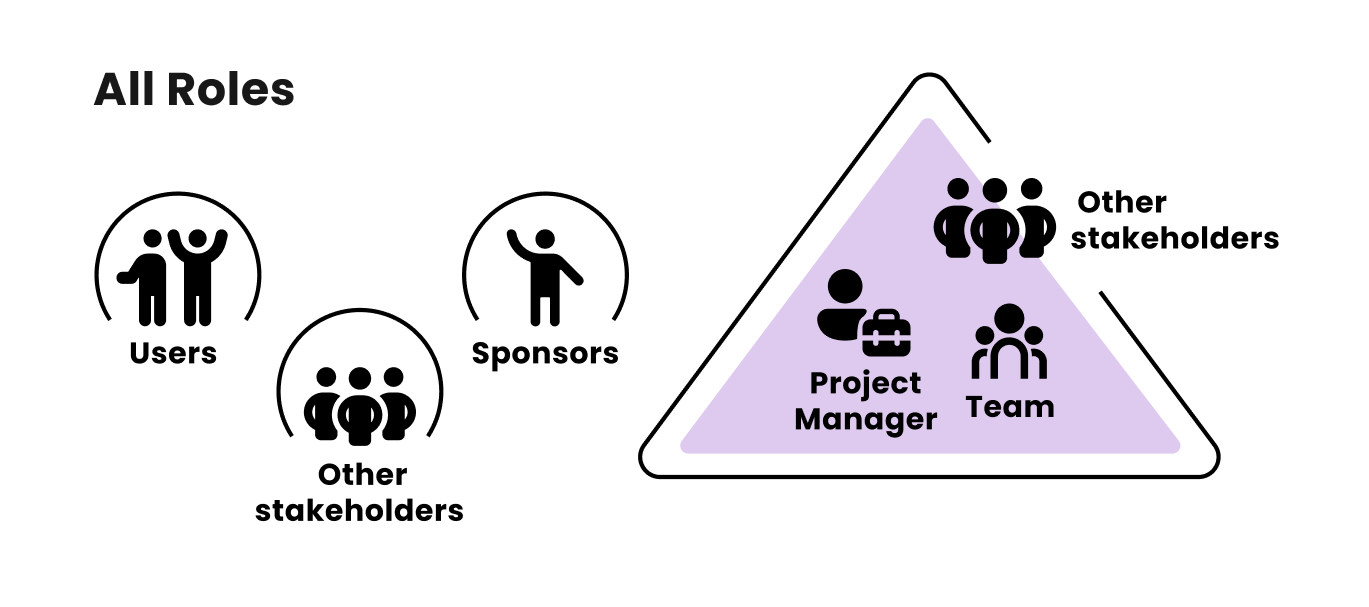Project Manager’s Quickstarter
Key Roles in Project Management
In project management, identifying and understanding the roles and responsibilities is critical for seamless communication. Using the same terminology is essential to ensure that the team, leadership, and clients are on the same page. Let's delve into this.
The Sponsor and The User
First, there's the role of the sponsor. It's crucial to accurately identify the project's sponsor, as mistakes can lead to significant issues. If you mistakenly align your project with the wrong sponsor, complications are likely to happen.
A sponsor is the individual who provides financial resources for the project. This brings us to the question, who is the user, then? The user is the consumer of the project's final outcome.

Imagine you're a project manager at a small company of 100–150 employees that assembles and supplies ATMs. Suppose the company's director introduces you to a new potential client interested in purchasing ATMs for a million dollars.
In this scenario, the client, who is buying the ATMs, is considered the user. However, the client is not the project's sponsor; your director is. Why? Although the client is paying, the key point of the sponsor's definition is providing financial resources FOR THE PROJECT. The client pays the company a million dollars, but the project's budget is determined by what the director decides.
Project management roles vary across sectors. In construction, managers may directly control the budget, distributing it themselves. Conversely, in IT, managers often don't handle finances directly. Instead, they're given resources, such as a team including analysts, testers, and designers, and are tasked with achieving specific results within a certain timeframe. Here, personnel are the equivalent of money; their salaries, managed by the director, are the project's budget.
There's also a hybrid scenario, particularly in IT, where managers are given both a team for a certain period and a budget for procurements (licenses, equipment, etc.).
Thus, in our case, the sponsor is the director, not the client. The director decides how to allocate resources, whether financial or human. Typically, there's only one sponsor in a project, and it's vital to know who this person is. The sponsor evaluates the project manager's performance, determines the project's success, and influences the project triangle.
The Team, Project Manager, and Other Stakeholders
The team consists of those working on the project: engineers, analysts, testers. It's important to distinguish this from the term “working group.” In large corporations, working groups might be formed, but these are not teams if they include individuals who are not actively working on the project.
As for the project manager, this role is well-known. The manager works with the team to achieve the project's objectives within the project triangle.
Lastly, stakeholders represent a broad category. Essentially, stakeholders include everyone mentioned: the manager, sponsor, user, and team, but also others who may have an interest in the project's outcome, such as external experts, competitors, regulators, etc.
Interplay of Roles Within the Triangle

It's also crucial to understand how these roles interact. The manager and team work within the triangle to ensure the project's success, formulating plans and completing tasks within set parameters. The sponsor, positioned outside the triangle, provides financial resources and agrees on the project's scope with the manager. While the sponsor is kept informed and involved in key decisions, they do not delve into the project's minutiae. The project is managed by the manager, not the sponsor.
As for the users, they’re not really interested in the details, but it’s a good practice to share key milestones so that they can form the right expectations and get the feeling that the project is going in the right direction.
Conclusion
The success of any project hinges on the clear definition and understanding of the roles involved in project management. From the sponsor, who provides essential financial backing, to the project manager and team working diligently towards the project's objectives, each role plays a pivotal part in navigating the project towards its goals.
By embracing these project management roles and responsibilities and fostering effective communication and collaboration among them, project leaders can ensure a cohesive effort that meets or exceeds expectations.




